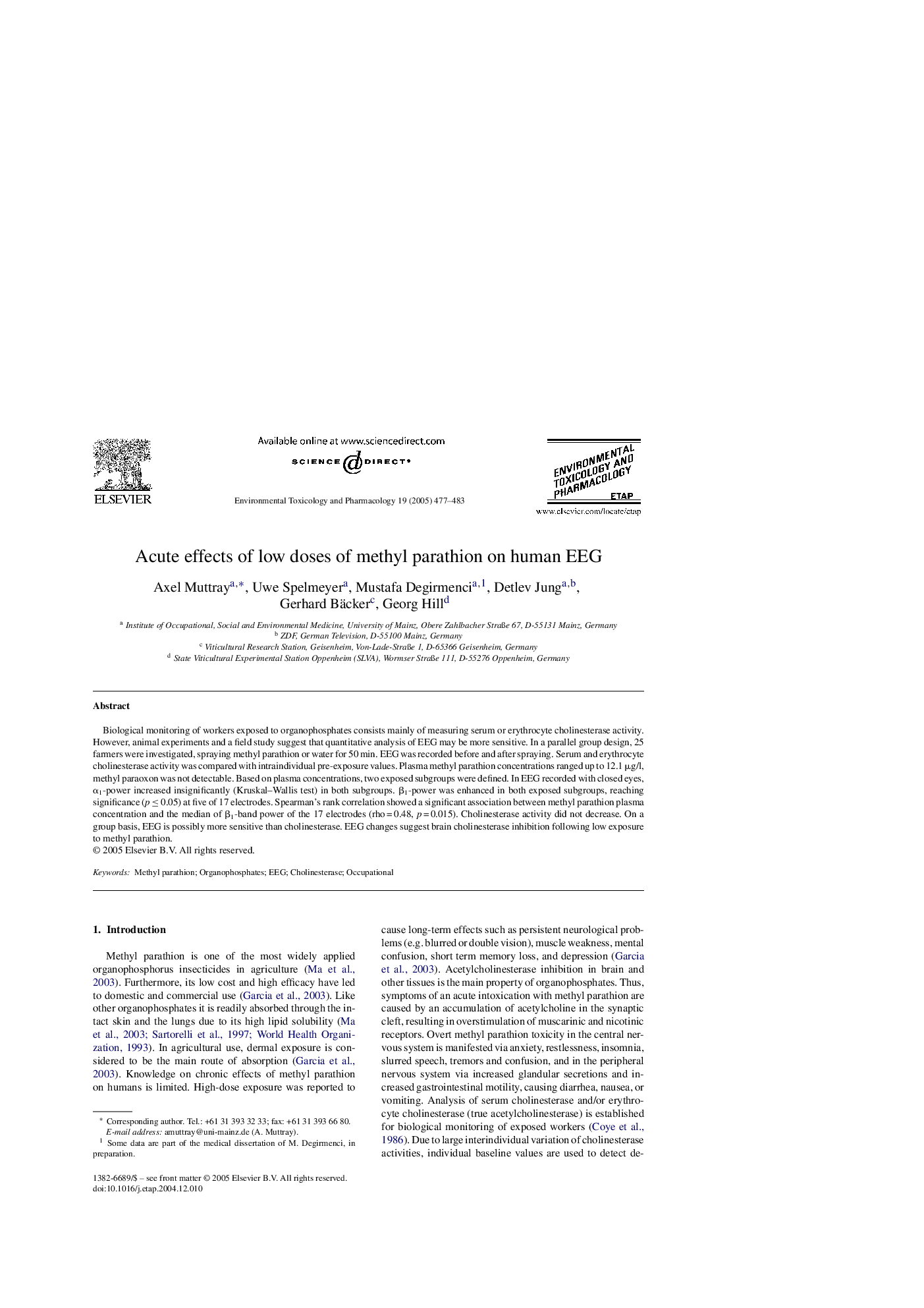| Article ID | Journal | Published Year | Pages | File Type |
|---|---|---|---|---|
| 9030069 | Environmental Toxicology and Pharmacology | 2005 | 7 Pages |
Abstract
Biological monitoring of workers exposed to organophosphates consists mainly of measuring serum or erythrocyte cholinesterase activity. However, animal experiments and a field study suggest that quantitative analysis of EEG may be more sensitive. In a parallel group design, 25 farmers were investigated, spraying methyl parathion or water for 50 min. EEG was recorded before and after spraying. Serum and erythrocyte cholinesterase activity was compared with intraindividual pre-exposure values. Plasma methyl parathion concentrations ranged up to 12.1 μg/l, methyl paraoxon was not detectable. Based on plasma concentrations, two exposed subgroups were defined. In EEG recorded with closed eyes, α1-power increased insignificantly (Kruskal-Wallis test) in both subgroups. β1-power was enhanced in both exposed subgroups, reaching significance (p â¤Â 0.05) at five of 17 electrodes. Spearman's rank correlation showed a significant association between methyl parathion plasma concentration and the median of β1-band power of the 17 electrodes (rho = 0.48, p = 0.015). Cholinesterase activity did not decrease. On a group basis, EEG is possibly more sensitive than cholinesterase. EEG changes suggest brain cholinesterase inhibition following low exposure to methyl parathion.
Related Topics
Life Sciences
Environmental Science
Health, Toxicology and Mutagenesis
Authors
Axel Muttray, Uwe Spelmeyer, Mustafa Degirmenci, Detlev Jung, Gerhard Bäcker, Georg Hill,
